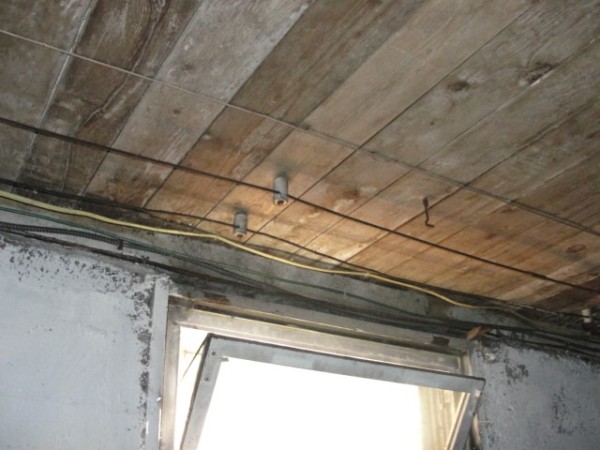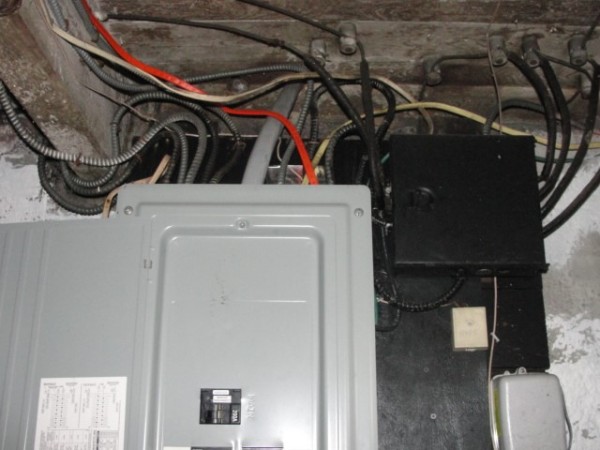If your house was built anywhere from 1900 to 1930 there is a good chance that you have knob and tube wiring. Why is knob and tube wiring so bad? Knob and tube wiring comes into the conversation when you are ready to sell your home. Insurance companies won’t insure a house that has knob and tube wiring.
Homeowners are in a panic when you have found a buyer for your home. You could be headed for the closing. Then the buyer hires a home inspector who finds this type of wiring in your home. The homeowner then hits the phone trying to hire an electrician who can remove this old wiring and replace it with the updated type of wiring. This newfound issue can cost you by losing your buyer and you will have to go through the whole process of placing your home back onto the market again.
Before you even place your home on the market to sell, you can call an electrician to come over to see if you have knob and tube wiring. Don’t paint the walls before you have this knob and tube wiring inspection done.
What does knob and tube wiring look like?
Get out your trusty flash light and head down to your basement. If you have a finished basement, go to your utility room or any room that has no sheetrock on the ceiling. You would see the floor joists above your head. Look for the knobs first. These look like white eggs nailed to the side of a joist. They are made out of porcelain. The knobs will have one single strand of solid wire running through it. The tubes look like a straw and are running through the wood joists with one wire running through it. They are also made of porcelain. The knobs keep the wires from touching the side of the wood joists and the tubes keep the wires from touch the joists as they go through the joists. The electricians were even smart back in the 1900’s by knowing that if there was a spark coming from the wires that wood would be a combustible to start a fire.

How do knob and tube wires work?
There are always two single strand solid wires running through your house. One wire is the feed power wire that comes from your circuit breaker or fuses. This wire will run to an electrical outlet or light fixture. The second wire is the return wire from your electrical outlet or light fixture back to the electrical panel. This is what creates an electrical circuit or circle of wire.
As the knob and tube wires start from the electrical panel and start their run throughout your home they will make a pit stop close to the vicinity of all your outlets and light fixtures about three away. More knob and tube wires are spliced onto the wires coming from the electrical panel and are ran to the outlets and lights. Then the knob and tube wires continue on like this until they have gone to all your outlets and lights fixtures throughout your entire house.
There are two ways that knob and tube wiring feed outlets and lights to get their power.
- As discussed above more knob and tube wires are spliced onto the feed knob and tube wires in the walls that can’t be seen and are actually ran to the outlets and light fixtures.
- Metal BX wires are splices onto the feed knob and tube wires in your walls that can’t be seen and the BX wires are ran to your outlets and light fixtures. Just because you see the metal BX wires does not mean that you don’t have knob and tube wiring. The BX wires are fed by the knob and tube wiring and are still considered the wrong method of wiring as I will explain coming up next.

Why is knob and tube wiring so bad? I have not had any issues and I have lived here for 40 years.
A Romex wire used in today’s home wiring consists of a black wire that is attached to the circuit breaker to bring the feed power out to your outlets and lights. A white wire that comes from your outlets and lights back to the electrical panel. A third ground wire that attaches to the outlets third prong of a three prong outlet. An outlet will have two holes or three holes in it to plug something into. This third ground wire will also attach to the metal parts of your light fixtures.
All this is done in one white Romex wire. Three different wires are in one overall white jacket of a Romex wire. Knob and tube wires are ran as two totally separate wires. One wire is the feed wire from the electrical panel and a second wire is the return wire back to the electrical panel. There is no ground wiring with the knob and tube wires at all!!!
What is this ground wire and how does it work?
When you plug a three prong appliance into a three prong outlet the appliance you plugged in is considered grounded. We all know what happens when we have a three prong appliance and have only a two prong outlet. We go get that trusty adapter that will accept a three prong plug and will plug into a two prong outlet. Your appliance will not be grounded by using this adapter method.
The third prong in your plug has a wire that goes from the third prong or hole of your outlet through the rubber cord that is attached to your appliance and attaches to the metal casing somewhere inside your appliance.
By using this safe method if and when something goes wrong inside your appliance and the power going to your appliance within the same rubber cord that is plugged into your three prong outlet comes into contact with the metal part of your appliance, this will alert the circuit breaker to trip immediately. If your appliance is plugged into one of those adapters or is fed by knob and tube wiring and power comes into contact with the metal parts or shell of the appliance the circuit breaker will not be alerted to trip!!!!!
Let’s say it is time to do your laundry. Your washing machine is fed by knob and tube wiring. You have been using this washing machine for years without any issues. But this time inside the washing machine there is a faulty part that now comes into contact with the shell or outside metal cabinet of the washing machine. How are you supposed to know this is all happening? It’s all internal inside the washing machine. As soon as you lean onto the washing machine to start it and now the metal cabinet is energized with electrical power, the power will go from the metal cabinet through your body and will try to come out your feet to the ground or floor on which you are standing on. You will be electrocuted and could die from this. All this happened in a heartbeat of one second. Electricity is invisible and can and will be deadly!!!
Other incidents would be a homeowner getting a slight electrical tingle as they come into contact with something that needs electricity for power.
You can consider yourself lucky by having knob and tube wiring in your home and this has not happened to you yet.
How do you remove and replace knob and tube wiring?
After it is determined which parts of the house has knob and tube wiring and which parts don’t a master plan can be drawn up of how we are going to get from point A or your electrical panel to point B the areas that have knob and tube wiring (All the Lights, Switches and Outlets).
There is only one thing that prevents an electrician from freely running the wires through the stud joists in your home. The actual walls and ceilings. We have to make holes usually every 16 inches along the walls or ceilings in order to expose all the stud joists located behind the walls or ceilings. This creates a lot of dust.
We recommend to remove all the shelf knick knacks or paintings on the walls and place them in a room in the house we will not be replacing knob and tube wiring in. The holes are usually filled in by a painter or a handyman.
How much does this cost?
Selling your home is a bad emotional game that is played out. There is this tug and war between the buyers and sellers of what the buyer wants the seller to fix in their home and the sellers not wanting to spend the money to have this work done. With knob and tube wiring, the buyers will not be able to get homeowners or fire insurance for the home. This makes the home unsellable. So with knob and tube wiring you have no choice but to get it done.
Well you don’t want to spend the money. Are you really spending money or making money? What is that supposed to mean? Let’s say you are asking $800,000 for your home. The home inspector comes and does the inspection and there is $120,000 worth of work that needs to be done in order to make the buyer happy to go through with the sale of your home. Do you want to give a credit of $120,000 to the buyer and move losing all that money?
How about if you invested $40,000 to hire contractors to get the work done and you now have made an extra $80,000. Would you walk away from $80,000 that you would have lost if you got no work done? This work you are spending money on now to get done is an investment to make the money on the back end of the sale. Remember you are selling your home that you lived at for 40 years and raised your children and there are so many memories.
But when you are selling your home you must start to become unattached from it and now it is a money game to get as much money as you can for your retirement. Like I said before, this is an emotional game being played out.
Call Now! 201-262-7710
Richard Marton Electrical Contractor LLC is a full service electrical contractor serving homeowners and businesses in Bergen, Passaic, Essex and Morris County New Jersey with electrical installations and repairs. We are also a Generac Generator installer.
Richard Marton Electrical Contractor LLC works with general contractors, residential architects, interior decorators, interior designers, painters, property management and property maintenance professionals, and professional organizers. We work with these professionals to give clients top of the line electrical installations within such projects as residential remodeling, residential renovations, plus build outs of new kitchens, bathrooms, home offices, add-a-level residential project and more.
